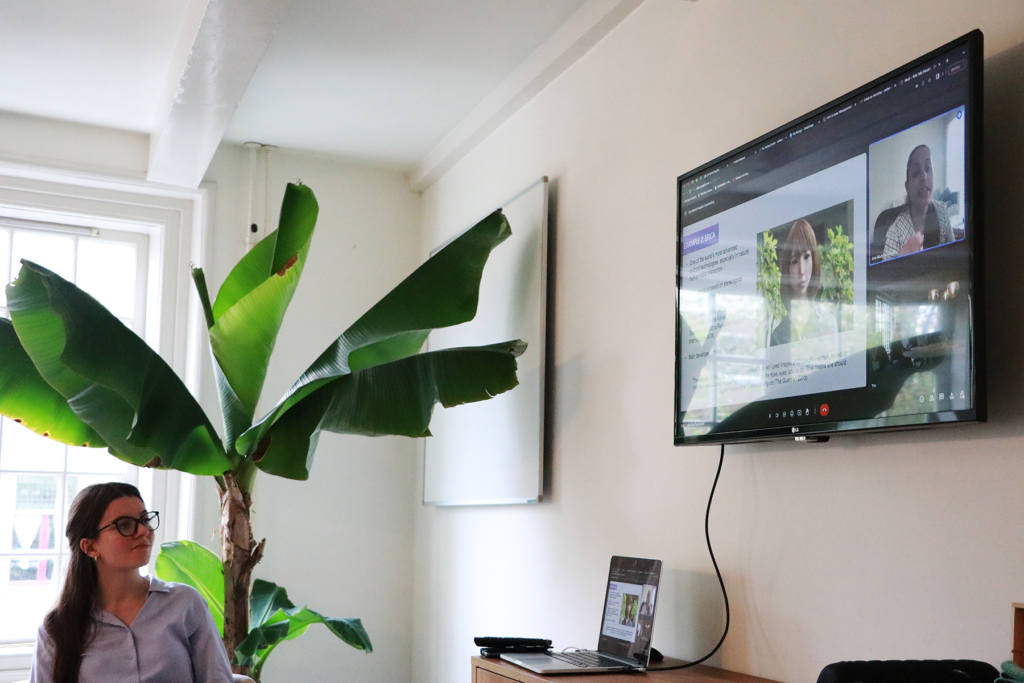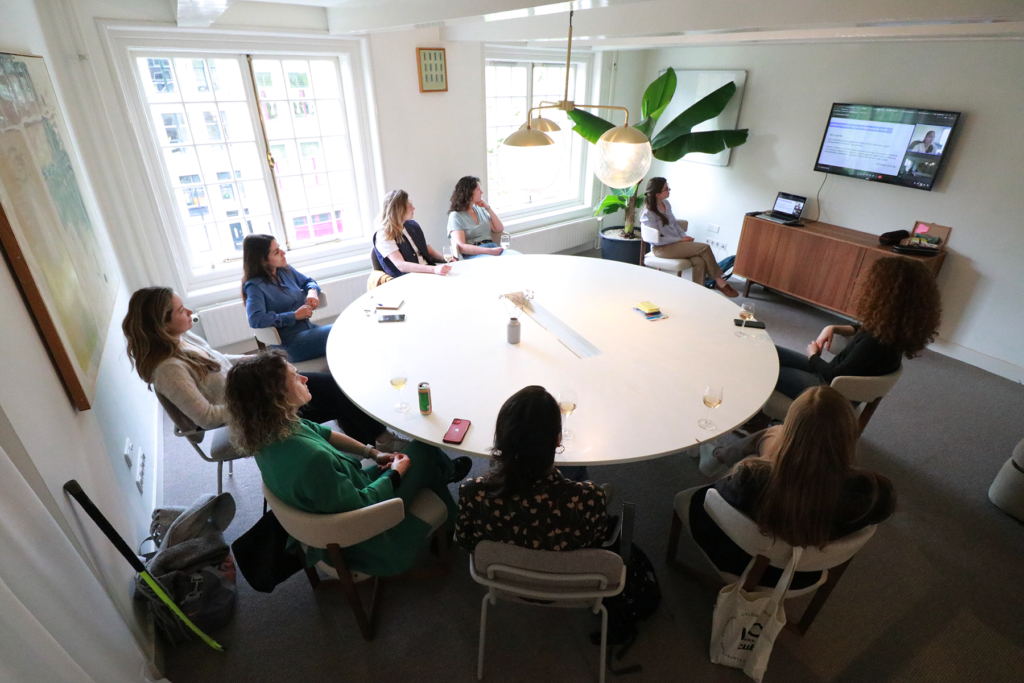
Why is there a huge gap in gender representation in AI?
What is it like when robots actually live around you? And what do robots have to do with gender representation? Ana Madera Holgado takes us on a journey to the role of robots in our lives and how gender actually plays a big part in it. During our Women in AI Circle event in May we discuss the stereotypes and talk about the more inclusive alternatives there are when it comes to robotic design.
Author: Ingrid van Heuven van Staereling.
There is no way around it: there still is a huge gender gap in the digital skills sector. That immediately gives a bit of context around the subject we are about to discuss. To start off it is good to note the difference between sex and gender, where we all know sex is defined as a biological dimension to the human body and gender is defined as socially constructed. “And it comprises social, cultural, historical conventions of deportment, costume, posture, gesture, speech, and so forth.” Ana tells us. “So what does the anthropomorphic theory say? It states that humans project lifelike qualities onto inanimate objects.” Any movement in inanimate objects triggers a part of us that makes us believe there is more than just an object. And this is even more emphasized when we talk about robots.
The anthropomorphic theory
Do we really see robots more like living objects? Reeves, B., & Nass did an experiment in 1996 that helped to prove the anthropomorphic theory, which was tested 20 years later by Benotti and Blackburn to see if it was not outdated. They had two groups test out a computer and had them submit feedback about their performance. The group that had to submit the feedback on the same computer was very careful and considerate about the way they gave their feedback, while the other group was very straight forward. When they asked the first group if they would have been more careful about giving their feedback, they were very much taken back by the question and denied it would even be a thing. So this proves that we are indeed very mindful in attending to the machine’s feelings and we are definitely not aware of this behavior.

Ana explains that this is the reason why producers of these machines or AI currently implement anthropomorphic features: “There is this trend that we should make these robots more sociable so they can undertake services and tasks, while being approachable and communicative.” Developers strongly believe that they should have a more human appearance in order for them to be able to enter our social sphere. “So the first thing they do is attribute gender, since this is a primary social category.” Which results in very binary, traditional forms of masculinity or femininity. And more importantly: most of them are female. Not only in appearance, but also in the name, voice or other aspects in the design that gives it away.
Tech education for girls
Now that we are aware of the imbalance of the male/female robots and AI’s that are developed we discuss where it originates from. “Mostly it comes from the overwhelming amount of male developers in the AI industry.” Research from UNESCO with the EQUALS Skills Coalition showed that although girls scored higher in their computer information literacy assessment than boys, they feel way less confident in their abilities. And it is more acute in advanced economies. “Which is a problem, because those are the ones that are more likely to fund projects and investigations in the field.” These girls, who score very high in their performance in AI or anything in digital skills, apparently feel like there is something in the way. Maybe they are raised or educated in a way that makes them feel like they are not capable of pursuing a career in these fields. As a result it becomes a male-dominted industry, which makes it easier for prejudice and stereotypes to be transferred into their robot design.
Stereotypes in AI and robots
Ana has a BA in Asian and African Studies from the Autonomous University of Madrid, Spain and also studied in Japan. She graduated in London from a MA in Japanese Studies. She researched the gendered design of Japanese humanoids and shares two Japanese examples with us: the hologram companion Azuma Hikari and the conversational robot Erica. Both are clearly designed for men, not women. They both have questionable features. For instance, Hikari calls her users ‘master’ and is always dressed like a maid, while Erica’s appearance is based on ‘images of 30 beautiful Japanese women’ (according to the creator, which is a male).
That makes you wonder: Why is making them look beautiful such a big part of it? Is this beauty framing beneficial to AI? Ana went to investigate and found very little research or evidence that proves the ideal of beauty makes the design of a robot more approachable. It turns out is it simply the most stereotypical way to describe a woman. “Women are accumulated by their appearance, while men are related to behavior.” Does making these robot or AI products beautiful make people come out and talk to them? “You might actually find them more daunting.”

Someone in the audience questions this idea. Are aesthetically pleasing appearances not more pleasant to connect with? Ana believes the lack of depth is missing. “Beauty is very subjective. Why not gather more perspectives?” It seems the appearance of these two examples are only based on the personal preference of the makers.
What about the female voices? “Research suggests that people prefer low-pitch masculine speech” It showed that people have the tendency to use the opposite sex voice. “Though, both men and women tend to characterize female voices as more helpful, sympathetic or comparative.” So if this is their preference, and companies want to sell more products, they eventually choose the female voice. Also, there are a lot of traditional ideas of women as carers and assistants which might have it’s effect on the choices companies make.

Exploring androgyny in AI
Ana emphasizes that it is important to ask ourselves why we think female voices are that way. Because at the end of it, it doesn’t matter if it is male or female if it gives you the exact same information, right? So do robots have to look a particular way to be more appealing? Some great examples come to mind, like the robot Pepper. This little robot has a design that doesn’t make it masculine or feminine. You interact with it through voice or on its screen and it’s voice is kind of electronic. “You might attribute it to something, but it is not designed that way.” There are also these zoomorphic designs, like the seal-like robot Paro. It is used as a therapeutic robot and the results are very good. There is even a genderless voice, called Q. It is recorded in a range between 145-175 Hz, the range defined by researchers as gender neutral. These are several examples of robots that do not have a gender, but are very pleasantly received. It proves that we might not have to add gender to AI solutions to make it more pleasing to be around.
Would you like to join one of our Women in AI Circles? We organize one every 2nd Thursday of the month. Check our WAI Circle page to keep updated.